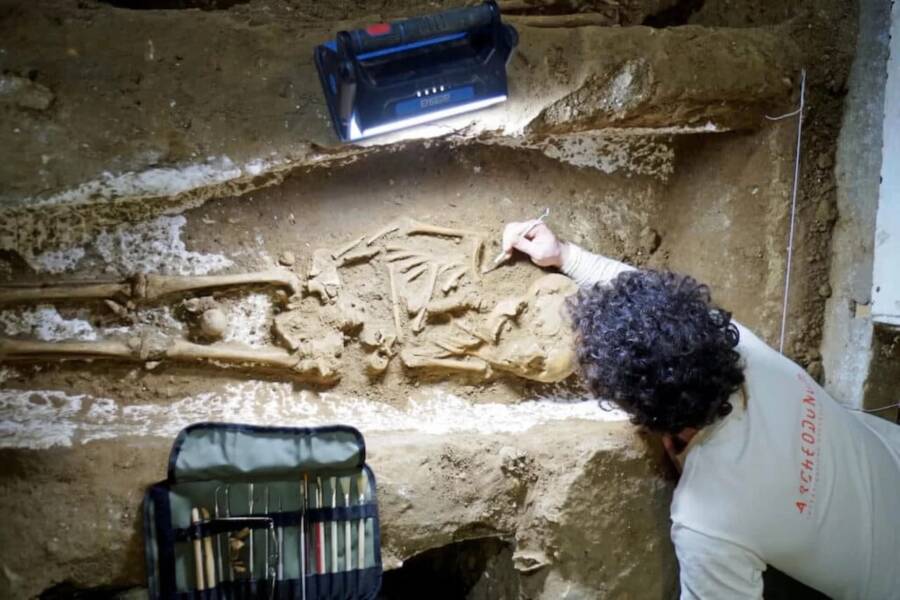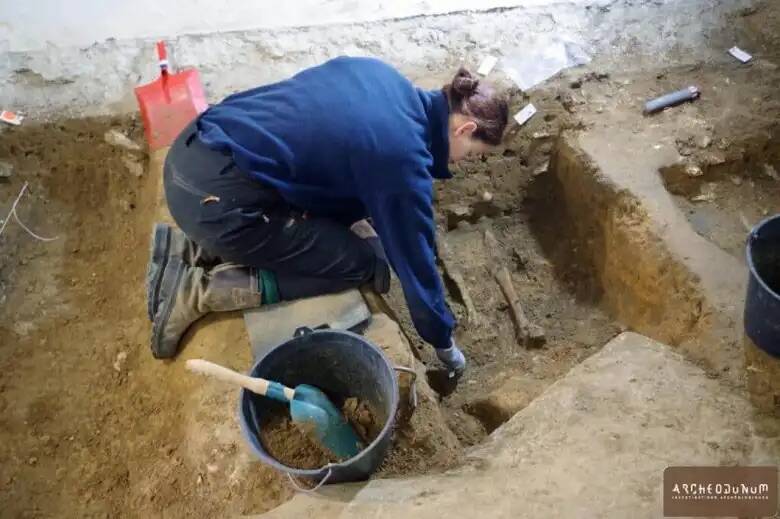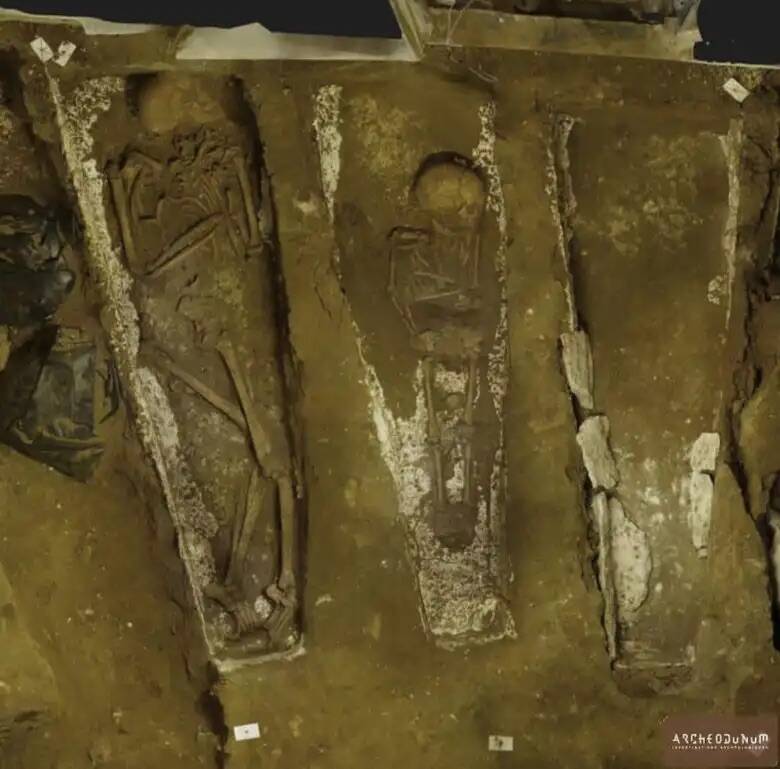Excavations unearthed 38 skeletons and 10 sarcophagi that were deposited at the site over the course of 700 years, between the third and 10th centuries C.E.
ArcheodunumAfter a Frenchman unearthed a skeleton beneath his sign , an archaeological excavation revealed a totality of 38 graves in his basement .
While renovating his basement , a Gallic homeowner made a macabre uncovering in the turd beneath his house : a human skeleton . The find sparked an archaeologic excavation that discover the presence of 38 graves and 10 sarcophagi dating to the other mediaeval period .
Experts have long known that there was a cemetery in the area and have even unveil a few sarcophagi over the centuries , but this is the largest dig of its kind in the neighbourhood . Now , researchers go for that analysis of the frame will shed Inner Light on the area ’s former denizen and their mediaeval sepulture practices .

ArcheodunumAfter a Frenchman unearthed a skeleton beneath his house, an archaeological excavation revealed a total of 38 graves in his basement.
The Medieval Cemetery Found Beneath A Modern Basement
ArcheodunumThe tombs were meticulously arranged .
After uncovering a underframe while renovating his cellar , a man survive in the Paris suburb of Corbeil - Essonnes called in experts to in good order unearth the remains . The Regional Archaeology Service of Île - Diamond State - France sent researchers to excavate the basement — and what they found was shocking .
The archaeologists excavate all four rooms in the basement , revealing 38 Robert Graves distributed across roughly 500 square pes . AsArcheodunum — the group that carried out the task — report , nineteenth - one C scholars ab initio assumed that inhumation like these were linked to the Notre - Dame - des - Champs chapel , which was believed to have been ramp up in the 7th century over a pagan tabernacle .

ArcheodunumThe tombs were meticulously arranged.
However , there has never been any evidence of either structure find to support that theory , nor have archaeologists carried out a scientific probe of the expanse until now . So , during the archeological site , researcher discover that these graves were much older than their forebears believe .
ArcheodunumThis medieval graveyard was in economic consumption for more than seven centuries .
The graves were arranged in parallel words , and the remains were deposit over the course of hundreds of long time — from the third to the 10th 100 C.E. What ’s more , the different types of burials uncovered during the excavations exemplify how funerary practices in France changed over time .

ArcheodunumThis medieval cemetery was in use for more than seven centuries.
How Medieval Burial Practices Transformed Over The Centuries
The earliest entombment found in the French root cellar , dating to around the third century C.E. , consist of wooden caskets in deep pits . As time go on , however , funeral practices evolved , as evidenced by the late graves uncovered beneath the house .
As the Middle Ages began at the end of the 5th century , sarcophagus made of plaster came into fashion in the region . Archaeologists found 10 such sarcophagi in the cellar , though they were n’t decorated like many others were during the fourth dimension menstruum . Each of the 10 grave held a unmarried frame , and they were set up in a fan - like form .
ArcheodunumThree of the Merovingian sarcophagus find beneath the Frenchman ’s firm .

ArcheodunumThree of the Merovingian sarcophagi found beneath the Frenchman’s house.
One sarcophagus uncovered in the basement was covered by a rock cube . It is uncomplete , so it ’s difficult for experts to determine precisely how it originally appeared . However , the stone does have rough-cut motifs found on plaster sarcophagus from the period , such as a russet scab , a Latin crossbreeding , and another crisscross inside a circle .
Other information about the burials is scarce at the moment , as investigator are work to learn more about both the graves and the skeletons within them . For now , the remains will be transported to a laboratory for further analysis . There , experts will square up the sexual urge of the individuals , their years when they died , and any medical conditions they may have lived with . They will also make eminence of the situation of the bone and the objects recover in the grave in hopes of learning even more about medieval sepulture practices .
After study about the medieval systema skeletale found beneath a home in France , explore theParis catacombsthrough our scary photo gallery . Then , check out some other macabrecatacombs from around the human race .